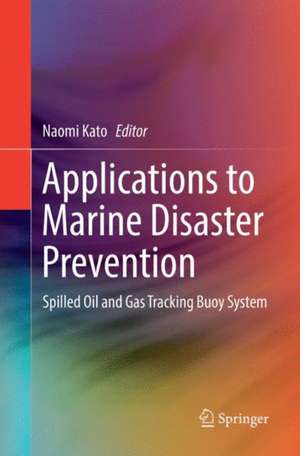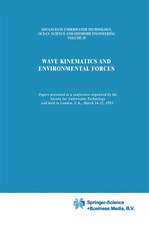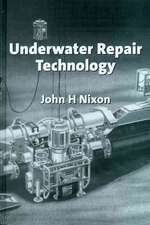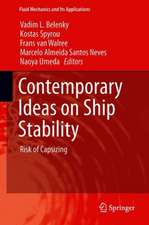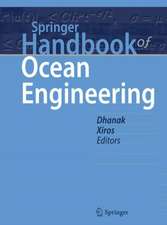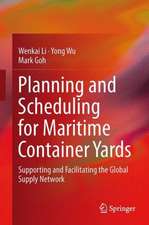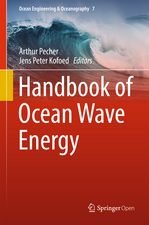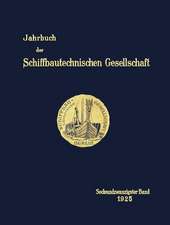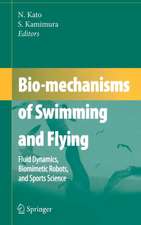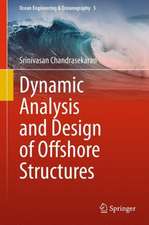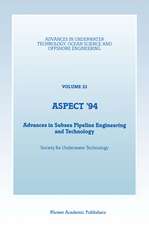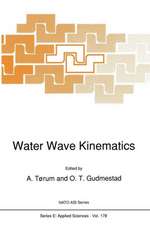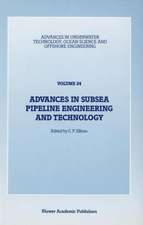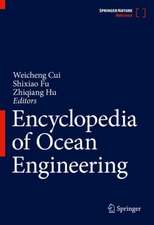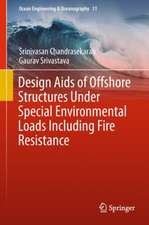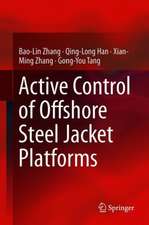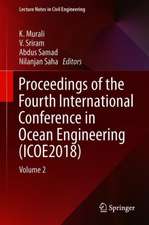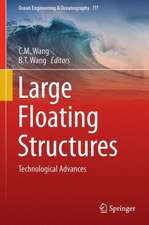Applications to Marine Disaster Prevention: Spilled Oil and Gas Tracking Buoy System
Editat de Naomi Katoen Limba Engleză Paperback – 22 apr 2018
| Toate formatele și edițiile | Preț | Express |
|---|---|---|
| Paperback (1) | 552.87 lei 38-44 zile | |
| Springer – 22 apr 2018 | 552.87 lei 38-44 zile | |
| Hardback (1) | 644.95 lei 3-5 săpt. | |
| Springer – 5 sep 2016 | 644.95 lei 3-5 săpt. |
Preț: 552.87 lei
Preț vechi: 691.09 lei
-20% Nou
Puncte Express: 829
Preț estimativ în valută:
105.79€ • 115.28$ • 89.14£
105.79€ • 115.28$ • 89.14£
Carte tipărită la comandă
Livrare economică 19-25 aprilie
Preluare comenzi: 021 569.72.76
Specificații
ISBN-13: 9784431567479
ISBN-10: 443156747X
Pagini: 201
Ilustrații: X, 201 p. 124 illus., 96 illus. in color.
Dimensiuni: 155 x 235 mm
Ediția:Softcover reprint of the original 1st ed. 2017
Editura: Springer
Colecția Springer
Locul publicării:Tokyo, Japan
ISBN-10: 443156747X
Pagini: 201
Ilustrații: X, 201 p. 124 illus., 96 illus. in color.
Dimensiuni: 155 x 235 mm
Ediția:Softcover reprint of the original 1st ed. 2017
Editura: Springer
Colecția Springer
Locul publicării:Tokyo, Japan
Cuprins
Introduction.- Lessons from Marine-Based Oil Spill and Gas Leak Accidents.- Development and Operation of Underwater Robot for Autonomous Tracking and Monitoring of Subsea Plumes after Oil Spill and Gas Leak from Seabed, and Analyses of Measured Data.- Development of a Robotic Floating Buoy for Autonomously Tracking Oil Slicks Drifting on the Sea Surface (SOTAB-II): Experimental Results.- Numerical Simulation of Oil and Gas Blowout from Seabed in Deep Water.- Effect of liquid-gas interaction on plume structure in blowout flow.- Numerical simulation of spilled oil drifting with data assimilation.- Conclusions.
Textul de pe ultima copertă
This book focuses on the recent results of the research project funded by a Grant-in-Aid for Scientific Research (S) of the Japan Society for the Promotion of Science (No. 23226017) from FY 2011 to FY 2015 on an autonomous spilled oil and gas tracking buoy system and its applications to marine disaster prevention systems from a scientific point of view. This book spotlights research on marine disaster prevention systems related to incidents involving oil tankers and offshore platforms, approaching these problems from new scientific and technological perspectives. The most essential aspect of this book is the development of a deep-sea underwater robot for real-time monitoring of blowout behavior of oil and gas from the seabed and of a new type of autonomous surface vehicle for real-time tracking and monitoring of oil spill spread and drift on the sea surface using an oil sensor. The mission of these robots is to provide the simulation models for gas and oil blowouts or spilled oil drifting on the sea surface with measured data for more precision of predictions of oil and gas behavior.
Caracteristici
Demonstrates that the autonomous deep-sea robot can collect dissolved substances in seawater in shallow water and also a high-resolution profile of water currents in deep-sea experiments Shows the effectiveness of a decision-making algorithm for sailing the autonomous surface vehicle (ASV) based on a complete time history of the scanned area around the vehicle Provides the data assimilation scheme incorporating measured data from multiple ASVs into the numerical simulation models consisting of ocean models and atmospheric model
